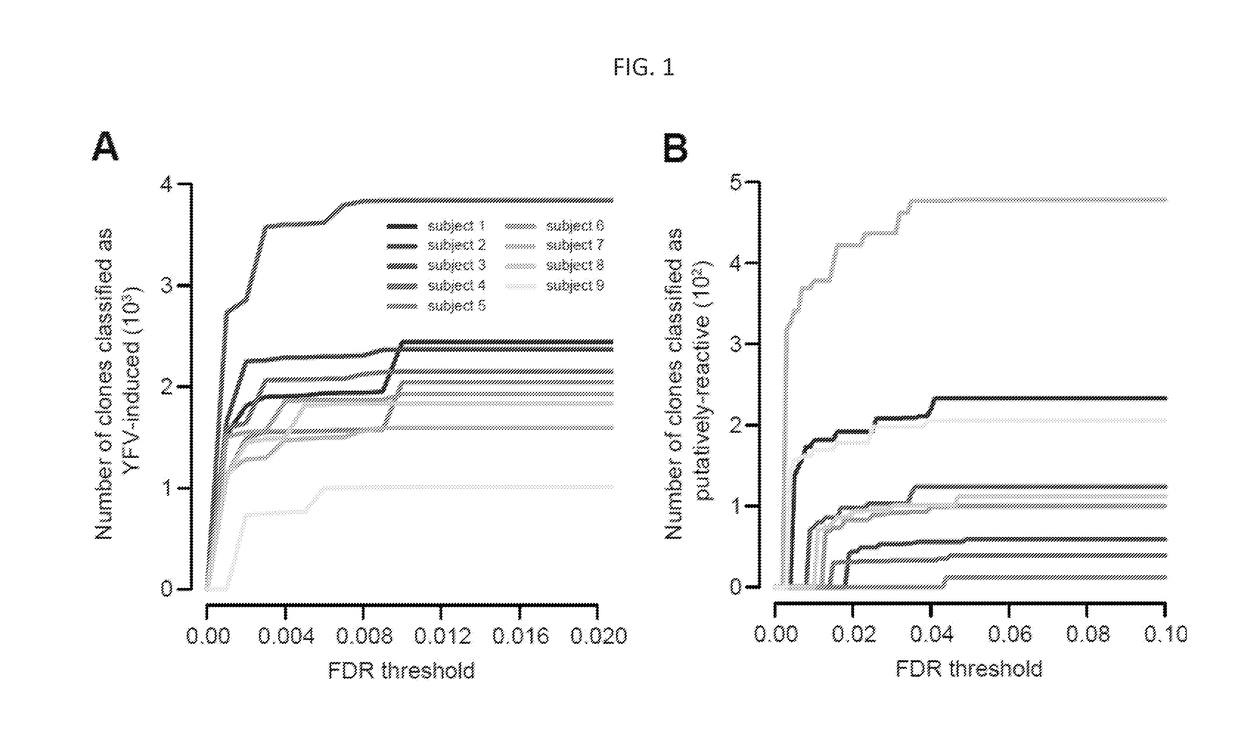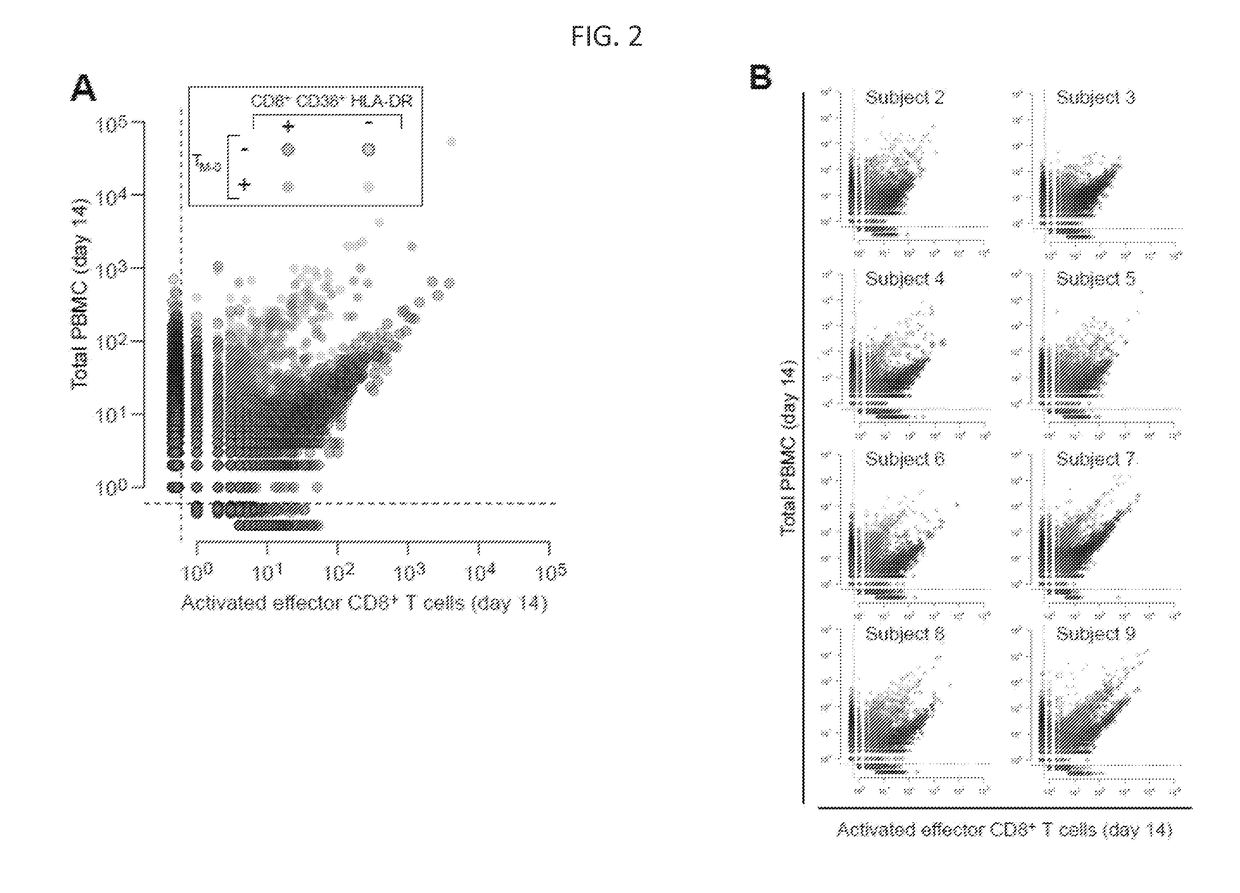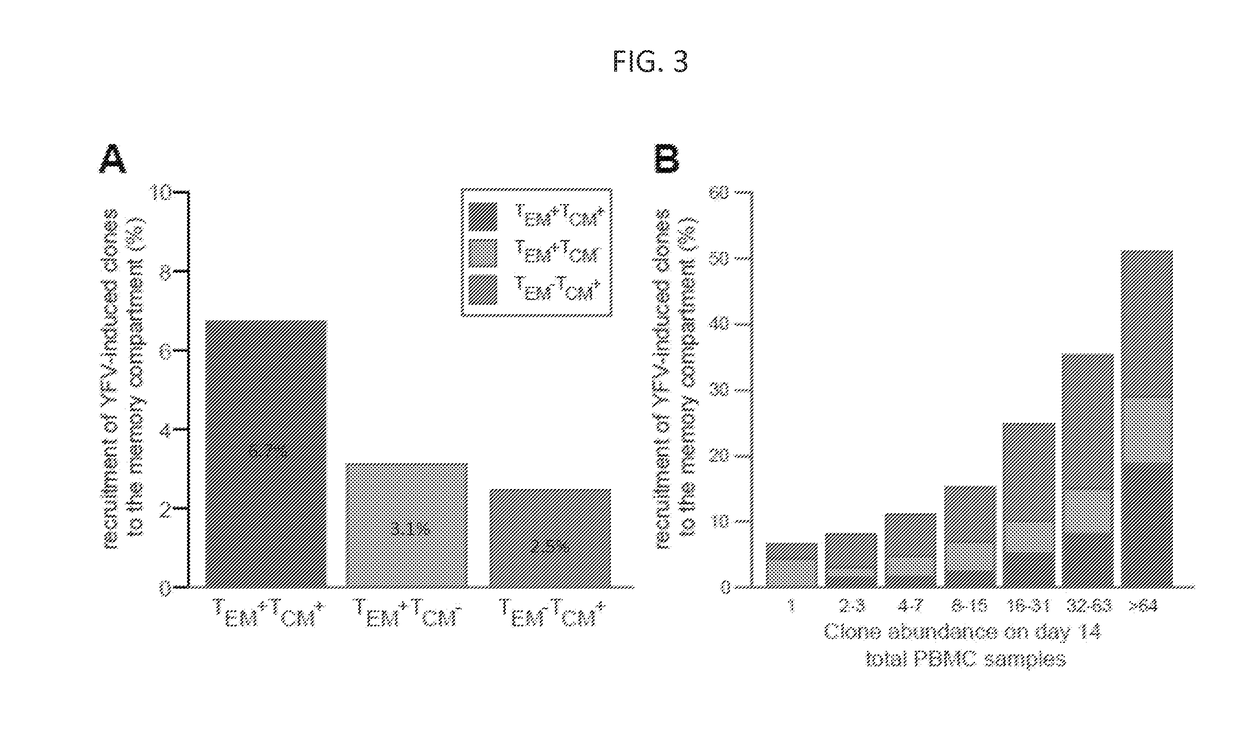Characterization of adaptive immune response to vaccination or infection using immunosequencing
a technology of adaptive immune response and immunosequencing, which is applied in the field of characterizing the adaptive immune response to vaccination or infection, can solve the problems of limited understanding of the cd4+ response to yfv, inability to relate the magnitude and diversity, and inability to characterize the magnitude of the t cell clonal response to different viral antigens, etc., and achieves higher proportional abundance, higher proportional abundance, and higher proportional abundance
- Summary
- Abstract
- Description
- Claims
- Application Information
AI Technical Summary
Benefits of technology
Problems solved by technology
Method used
Image
Examples
example 1
Identifying Vaccine-Induced Activated T Cells
[0189]The investigation of pathogen-induced effector T cells is essential to accurately characterize the dynamics and breadth of the human immune response. The Yellow Fever vaccine (YFV) has been broadly used as a model to understand how a controlled, self-resolving acute viral infection induces an effective, long-term protective immune response. In order to analyze the dynamics of the T cell repertoire before, during, and after vaccination, human volunteers with the live attenuated yellow fever vaccine YF-17D, which constitutes an established model of a controlled acute viral infection. High-throughput sequencing was used to characterize the breadth of the anti-viral effector cell response.
[0190]In this study, vaccination with the yellow fever vaccine YF-Vax®, which is based on the YF-17D204 attenuated strain, was used as a model of infection, in particular acute viral infection.
[0191]In addition, the methods of the invention used to cha...
example 2
Characterization of the Recruitment of Individual Clones to Immunological Memory
[0222]In order to determine which of the YFV-induced clones identified in the previous example entered the long-term central and effector memory compartments, samples obtained from six of the volunteers ninety days post-vaccination were analyzed (Table 1, Appendix). Preliminary studies have demonstrated that YFV-induced activated effector CD8+ T cells return to baseline levels 30 days post-immunization, and suggest that YFV antigen-specific cells that are detected beyond this time point correspond to memory cells (Miller et al. 2008, Immunity 28:710-722). Therefore, YFV-induced clones identified as enriched on the d14 activated, effector T cell post-immunization compartment, but absent from the TM0 compartment in the corresponding day 90 post-immunization samples (i.e., the putative YFV-specific clones) were tracked to determine which clones were contained in the effector memory compartment (TEM, defined...
example 3
Concordance Between the Expansion in Total PBMCs and Enrichment in the Activated Effector CD8+ T Cell Compartment
[0226]In addition to the data presented above, the approach disclosed herein also allowed for the identification of activated, effector CD8+ T cells that expanded massively in response to YFV through the direct comparison of the unsorted total PBMC repertoires isolated on days 0 and 14 post-immunization. The statistical method described in detail above can be applied to the identification of T cell clones that have significantly expanded in the d14 PBMC sample as compared to the day 0 pre-immunization sample from the same individual (FIGS. 1B and 5).
[0227]Identification of YFV putatively reactive clones. FIG. 5A shows the abundance of unique clones identified by statistical enrichment in the day 14 post-vaccination total PBMC sample compared to the pre-vaccination day 0 total PBMC sample from subject 1. Putatively reactive clones are enclosed by a circle in FIG. 5A. FIG. ...
PUM
| Property | Measurement | Unit |
|---|---|---|
| time | aaaaa | aaaaa |
| mass | aaaaa | aaaaa |
| time | aaaaa | aaaaa |
Abstract
Description
Claims
Application Information
 Login to View More
Login to View More - R&D
- Intellectual Property
- Life Sciences
- Materials
- Tech Scout
- Unparalleled Data Quality
- Higher Quality Content
- 60% Fewer Hallucinations
Browse by: Latest US Patents, China's latest patents, Technical Efficacy Thesaurus, Application Domain, Technology Topic, Popular Technical Reports.
© 2025 PatSnap. All rights reserved.Legal|Privacy policy|Modern Slavery Act Transparency Statement|Sitemap|About US| Contact US: help@patsnap.com



